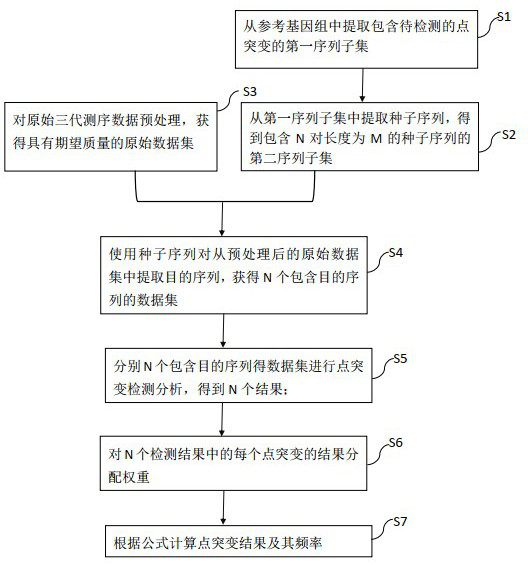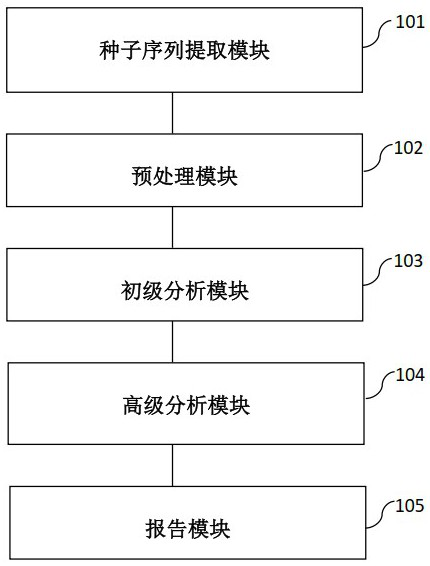Analysis method and device for detecting point mutation based on third-generation sequencing data
A technology of sequencing data and analysis methods, applied in the field of bioinformatics analysis, can solve the problems of low sensitivity of low-frequency mutation detection, insufficient application scenarios, and inability to detect samples and sites at the same time
- Summary
- Abstract
- Description
- Claims
- Application Information
AI Technical Summary
Problems solved by technology
Method used
Image
Examples
Embodiment 1
[0092] Embodiment 1 uses the method analysis data of the present invention
[0093] 1. will contain BRAF-V600E, EGFR-L858R, EGFR-T790M, KRAS-G13D as well as AKT1-E17K The standard samples of the standard sample and the negative control sample NA12878 were prepared through the experimental library and repeated three times, and sequenced using the QNome-9604 nanopore sequencer to obtain 6 original long-read sequencing data, among which HUM964, HUM965 and HUM966 It is positive control data, and HUM967, HUM968 and HUM969 are negative control data.
[0094] 2. Extract 9 short sequences with a fixed length of 101 bp on the genome for the 5 target sites to be detected in step 1 according to their positions, in which the positions of the target sites on the extracted short sequences are respectively fixed at 11th base, 21st base, 31st base, 41st base, 51st base, 61st base, 71st base, 81st base and 91st base Base (ie D=10bp), the final set of 9 short sequence fragments containin...
PUM
 Login to View More
Login to View More Abstract
Description
Claims
Application Information
 Login to View More
Login to View More - R&D Engineer
- R&D Manager
- IP Professional
- Industry Leading Data Capabilities
- Powerful AI technology
- Patent DNA Extraction
Browse by: Latest US Patents, China's latest patents, Technical Efficacy Thesaurus, Application Domain, Technology Topic, Popular Technical Reports.
© 2024 PatSnap. All rights reserved.Legal|Privacy policy|Modern Slavery Act Transparency Statement|Sitemap|About US| Contact US: help@patsnap.com










